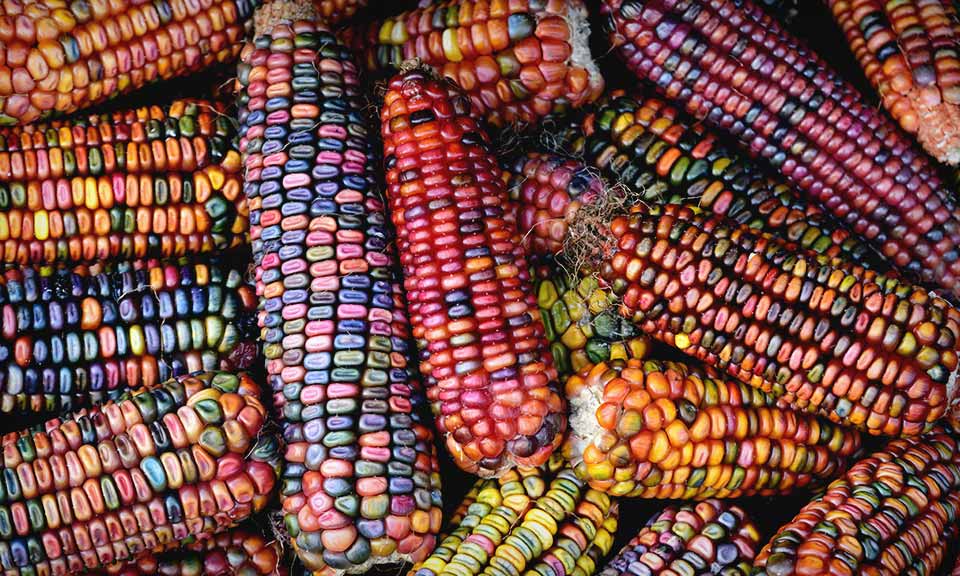Vietnam to defer corn purchases until Brazil's Safrinha harvest on poor hog margins

Vietnam, facing depressed hog margins, is likely to defer corn purchases until Brazil starts harvesting its Safrinha crop, traders and industry sources told S&P Global Commodity Insights, especially given the currently backwardated feed corn market and high prices for soybean meal.
Corn cargoes on CFR Vietnam basis for shipment over March-May were offered between $344-$346/mt CFR Feb. 7. The forward curve for corn prices slopes downward with June shipment indicated at $331-$332/mt CFR while shipments over July-November, when Brazil's Safrinha crop reaches the market, were at $314-$317/mt CFR, according to market sources.
Platts assessed Corn CFR Northeast Asia at $338.25/mt Feb. 7, showed S&P Global data.
Buyers are likely to defer any demand to later shipments amid the backwardation in the physical corn market to Asia and weak margins in the livestock sector, said Vietnam-based sources. "We will look for cheaper corn from the region to fill up any shortfall in the next quarter or use existing stocks," a buyer said.
Hog prices in Vietnam have been declining after hitting a one-year high of VND 68,000-72,000/kg ($2.90-$3.07/kg) in July 2022, with prices at the end of January at VND 51,500-52,500/kg ($2.20-$2.24/kg), Vietnam-based industry sources said.
"Hog raising margins are currently in negative territory with live hogs prices at this level," said a local trader.
The surge in hog supply for the Lunar New Year season led to lower prices and there is still ample availability in the market, which is expected to keep a lid on prices in the short term, market sources added.
The sector also faces challenges from rising input costs for feed and feed raw materials. Corn and soybean production in Argentina have been continuously revised down in the current marketing year amid severe drought, which led to bullish basis prices and Chicago Board of Trade futures for corn and soybean meal.
Vietnam reduced corn imports for a second consecutive year in 2022 amid high prices, with local feed market participants using carry-out for feed production. Domestic carry-out fell 26% on the year to 1.10 million mt in 2022, according to industry estimates while swine feed production grew 8% to 16.4 million mt.
Cheaper corn continued to be offered from India and Pakistan with buyers quoted $330/mt CFR for prompt shipment, while there was also an offer for Russian corn for March shipment at $335/mt CFR. "At these levels, there will be buyers, everyone is looking for cheap corn. However, the issue is on how the payment is made, not many buyers can execute this trade," a Vietnamese broker said.
Feed buyers also said that the prices of alternatives to corn such as feed wheat and barley were looking increasingly favorable for Q2 and early Q3, incentivizing substitution of feed grains in feed formulation.
Indonesia had exported over 200,000 mt of corn over September-November 2022 to regional markets in the Philippines, Vietnam and Malaysia after weak local demand and falling domestic corn prices, S&P Global reported earlier.
Domestic corn prices were around Rupiah 4,000/kg DAP Jakarta when these exports were made. However, an uptick in demand in preparation of festivities, higher production costs amid expensive seeds and fertilizers, and crop switching to planting lower maintenance cassava crops reduced supply and supported domestic corn prices. Domestic corn prices recovered to about Rupiah 5,150-5,300/kg DAP ($340-$349/mt) at the end of January, sources said.
Prices of South American soybean meal to Vietnam and other Southeast Asian destinations have continued to rise on the back of strengthening Chicago Board of Trade futures following continued concerns over Argentina's dry weather and soybean production. The higher soybean meal price is expected to temper growth in the feed and livestock sector in the near term.
Soybean meal was indicated at a basis price of $67.5/st over the CBOT futures for the April-July shipment window, corresponding to a flat price of $595/mt. March shipments were priced at $81/st over March futures, or $633/mt, Feb. 7. However, buying indications for soybean meal for deferred shipments remain in the low $60s/st over CBOT futures.
High soybean meal prices have incentivized Asian buyers to source cheaper alternatives. In January, South Korean feed buyers bought 19,000 mt of soybean meal of Chinese origin and 40,000 mt of rapeseed meal of Indian origin to offset the rising cost of South American soybean meal, market sources said.
Indonesian feed buyers have recently started considering purchasing Indian soybean meal while Vietnamese buyers have continued to buy soybean meal from India, said sources.

News
Bayer AG has announced the pilot of an expert generative AI (GenAI) system that “quickly and accurately” answers questions related to agronomy, farm management and Bayer agricultural products. The pilot has been developed in collaboration with Microsoft as leading technology partner and Ernst & Young (EY) as an industry partner, the company said. The system is the result of Bayer using proprietary agronomic data to train a large language model (LLM) with years of internal data, insights from thousands of trials within its vast testing network and centuries of aggregated experience from Bayer agronomists around the world, the company said. “Our unique GenAI system has the potential to serve agronomists and benefit farmers all over the world, further advancing AI as an indispensable technology for agriculture,” said Amanda McClerren, CIO and head of digital transformation & information technology for Bayer’s crop science division. Bayer said it is exploring ways to integrate the expert GenAI system into its digital offerings, and the company anticipates broad opportunities for collaboration with other agricultural offerings and partners. “Bayer aims to expand the pilot of the expert GenAI system to selected agronomists and potentially farmers as early as this year, while continuing to advance a separate GenAI prototype allowing users to directly query their own farm data,” the company said. In addition, the partnership between Bayer and Microsoft enables the company to bring ready-made capabilities, AgPowered Services, to the agri-food industry, such as Bayer’s Historical Weather that brings a comprehensive weather dataset to Azure Data Manager for Agriculture that spans the last 40 years and provides detailed, field-level weather insights across global agricultural regions, the company said. Integrating tools from IBM, including from the IBM Environmental Intelligence Suite, the new capability, which was previously available for internal use only, can inform weather risk assessments and actuary processes, Bayer said. It will also be used by Bayer and others to forecast crop seasonality and production changes year over year, as well as train agronomic models, it said. Meanwhile, Bayer is developing a connector that enables access to irrigation data from Lindsay Corp., an industry-leading irrigation solution provider. This expands the data types available to Azure Data Manager's enterprise customers, making it possible for them to connect to irrigation data in the same way as weather, imagery, original equipment manufacturer (OEM) and other data types, the company said. The new cloud offerings will also support regulatory and sustainability reporting, such as providing supply chain traceability that can help ensure compliance with new laws such as the EU Deforestation Regulation, which is expected to go into effect at the end of 2024, Bayer said. This article was first published in chemweek.com. Photo credit: Bayer

News
Asia has seen the fastest growth in biofuels production and exports globally, driven by government policies and export markets for feedstocks. To capitalize on the boom, governments have rapidly pushed out biofuel mandates focused around their country’s main agricultural products. Presently, the largest biofuel producers in the region are China, India, Indonesia, Malaysia, the Philippines and Thailand. Here’s a ready reckoner for Asia’s major biofuel policies along with production, trade and prices. Click for the full-size infographic